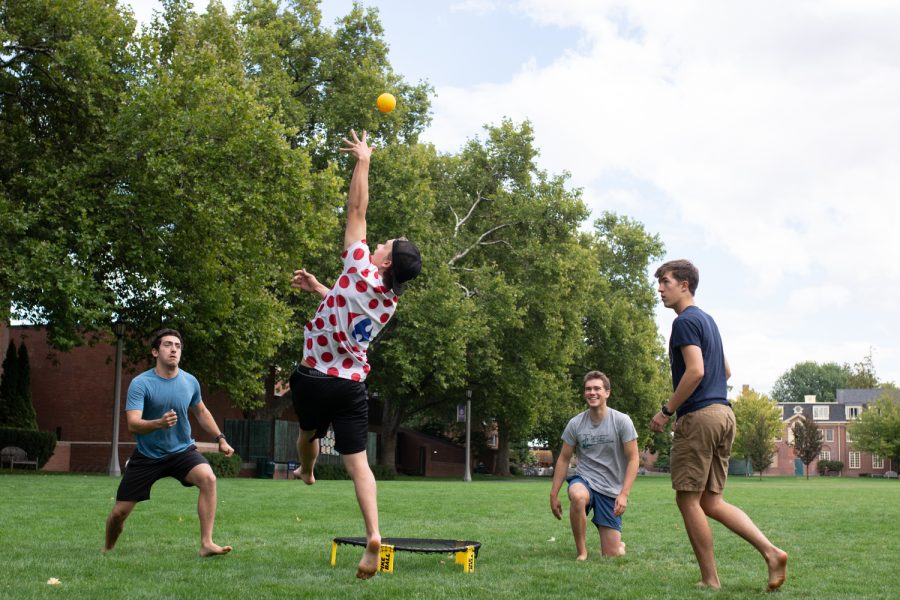In 2001, it all came crashing down. The political system had no credibility. Two presidents resigned over the course of two weeks; the government defaulted on its foreign debt and later devalued the currency. The streets were filled with protesters chanting “!Que se vayan todos!” Away with them all.
The economic system had no credibility. People were without work, had no access to their savings, and the currency was worthless. The peso was no good for buying food, housing, basic necessities; it was nothing more than a meaningless slip of paper.
People devised various ways of taking care of themselves. They traded goods and services informally, with informal currency. They created neighborhood assemblies to solve their problems, distribute food, administer hospitals, protest, etc. The only people you could trust were the one ´s you interacted with face to face.
Walking the streets of Argentina today it is impossible to tell that such things happened, much less so recently. The economy is more or less stable, and everything is business as usual. People are shopping, eating out, voting, spending money, going on with their lives as though nothing had happened. Almost no one would say “!Que se vayan todos,” attempt to circumvent the established political system, or anything of the like.
Of course, all of this popular sentiment did not simply evaporate. It was institutionalized, incorporated into the fabric of the state, for better or for worse. It hangs heavy over Argentine politics as usual, from the numerous protests in Buenos Aires to presidential politics
KIRCHNERISM
In 2003, President Nestor took office with the crisis still casting a long shadow over the political and economic situation. The currency and the macroeconomic situation had somewhat stabilized, but there was still widespread discontent, poverty, unemployment, and the failure to meet basic social and economic needs. Kirchnerist governance (Nestor, 2003-7, Cristina, 2007-present) is the realization of a whole slew of popular demands which had surfaced before, during and after the crisis. Their entire political rhetoric is based upon widespread, popular participation in the process of government and its vital importance.
For decades, Las Madres de la Plaza del Mayo had been protesting weekly, demanding justice for wrongs committed during the Dirty War (1976-83). They are the mothers of desaparecidos, people who the military government systematically tortured and murdered for holding subversive political views. They were demanding the release of all records and the prosecution of all those responsible. Kirchner opened the files, lifted the amnesty granted to military members, and demilitarized the country in order to reduce the military ´s influence and free up money for social programs. Today the truth is known and the military no longer sits on a pedestal.
Much of the anger and protest in 2001 stemmed from the severe lack of social-services, the sharp annual cuts in government spending, and the lack of employment. Under the Kirchners, government-spending on social-programs is increased every year. Every year, numerous social demands are made into law. Employment is still iffy, as much of it exists outside of the formal economy. Nonetheless, Kirchnerism has the strong support of the poor due to the many government programs that exist to reduce and alleviate poverty. .
2001 lives on but in a very different form: a populist, hierarchical, bureaucratic welfare state that incorporates popular demands into its political agenda.
MOVIMIENTO BARRIOS DE PIE/MOVIMIENTO LIBRES DEL SUR
(Unfortunately, neither of these names translate well into English. Barrios de Pie translates as “Standing Neighborhoods.” “Standing” in the sense that they are politically conscious and active. Libres del Sur transtlates as “Free Ones of the South.”)
Barrios de Pie emerged during the heat of the 2001 crisis. It was one of the many organizations involved in protesting, distributing food, and otherwise meeting community needs, a notable action being the raids on grocery stores as a means of acquiring food. As with most-all of the organizations of the time, Barrios de Pie wanted to break from the nonsense of the old-political machine the bureaucracy, the hierarchy, the elitist processes in which politicians create solutions for people rather than people creating solutions for themselves.
When Kirchner was elected in 2003, some people were able to see that Kirchnerism was merely the same-old political system hiding behind the mask of a more-friendly social policy. Barrios de Pie was not one of these organizations, it approved of and incorporated itself into Kirchnerism, a story that has been told a thousand times. Kirchnerism won much support from the left with its social policies, and gained extra points when Eduardo Duhalde–the centrist president (2002-2003) whose support was crucial in getting Kirchner elected–began to disapprove of Kirchner.
As the years went by, those within Barrios de Pie became more and more disenchanted with Kirchnerism, especially as it “PJed,” that is, associated itself more and more with the hierarchical Justicialist Party (PJ). In 2008, Barrios de Pie broke with Kirchnerism. Their criticism: while Kirchernism does respond to social demands, the Kirchners govern in a closed fashion rather than opening the government to true, popular participation. Today, it aligns itself with Frente Amplio Progressista (see blog)
In the past 5 years Barrios de Pie has expanded itself into Movimiento Libres del Sur, which includes a political party and a university arm, which I joined in August and volunteer with in a popular education project.





